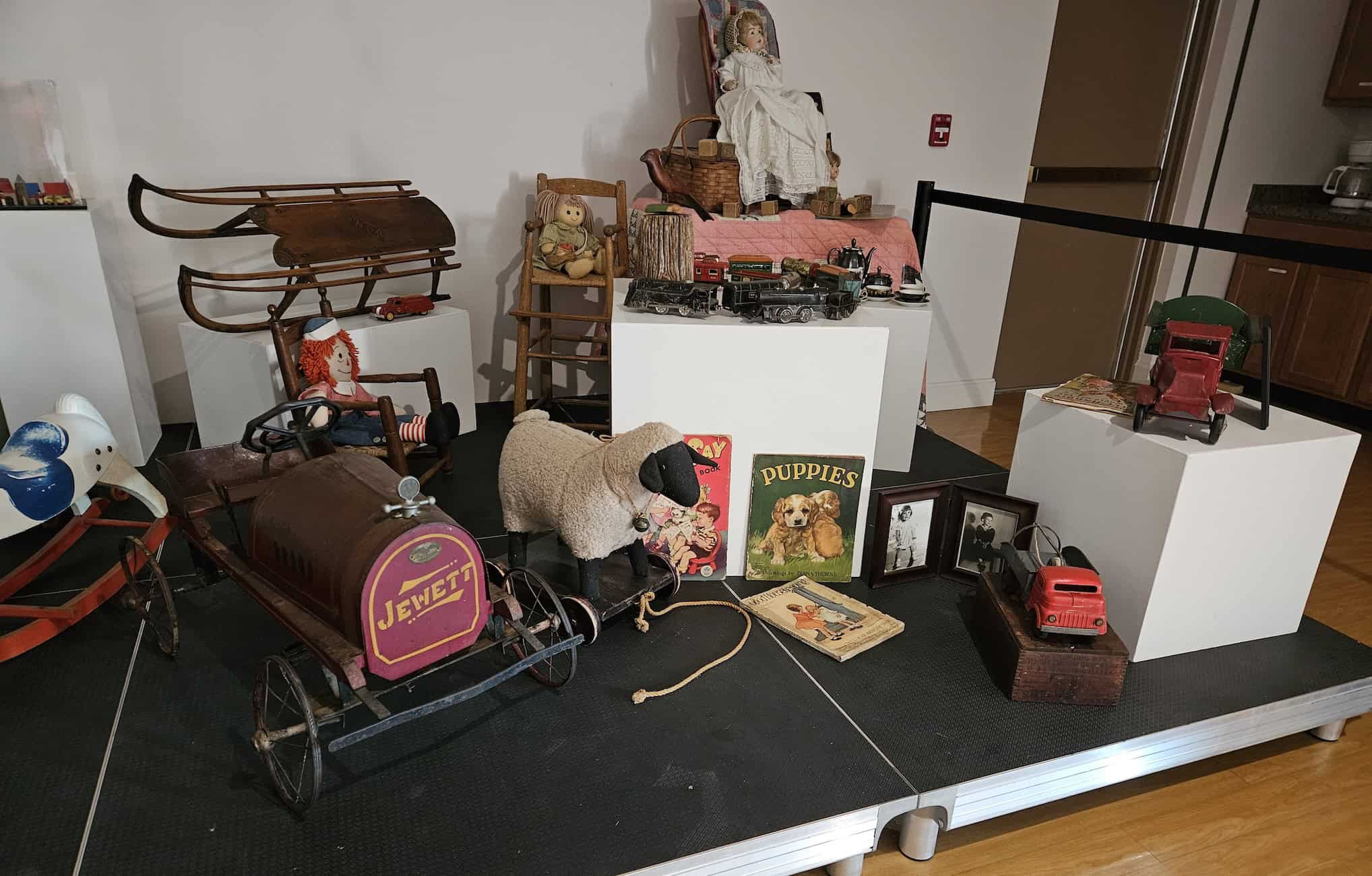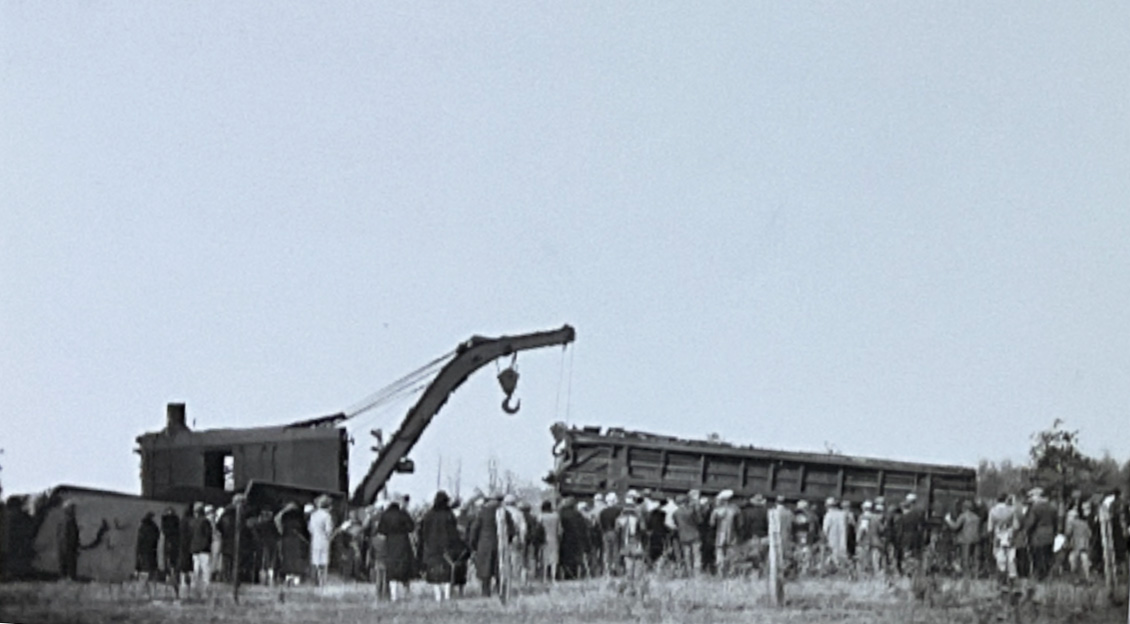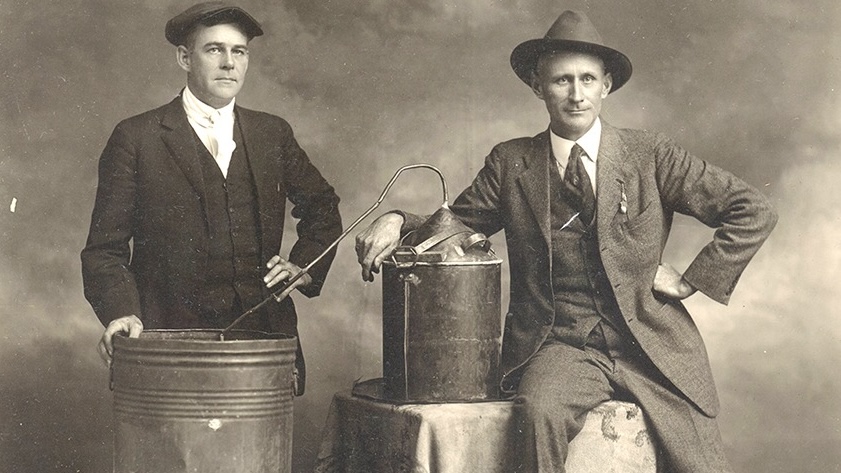For 81 years, Big Boy’s Restaurant in Wright City became a landmark for locals and a destination for travelers keen to devour an all-you-can-eat supply of fresh, fried chicken.
Big Boy’s — not to be confused with the Frisch’s or Bob’s Big Boy burger chain franchise — was local to Wright City for its eight-decade run and at its peak served 50,000 chickens yearly.


A new career — all before lunch
James Chaney, his wife Sue, and their two teenage sons stopped for breakfast at Bill Fricke’s Silver Moon restaurant in Wright City. The family was on their way home to Arkansas after a brief vacation in Colorado.
It was Saturday, June 7, 1924, and the Silver Moon had ham, eggs, and other diner staples like pancakes and coffee on the menu, all wafting around the dining room.
Glancing over the salt and pepper shakers and out the window, James “Big Boy” Chaney — all 275 pounds of him — liked what he saw out over the town.
“Like to sell this place?” Mr. Chaney asked Mr. Fricke. “What’ll you take?”
Taken aback, Bill named his price, which seemed reasonable enough. Though his mind was made up, Big Boy turned to his two sons. “Boys,” he said, “What do you say we take a shot at it?” The boys nodded approval, and Mr. Chaney said to Mr. Fricke: “I’ll take it.”
“When do you want to take over?” Mr. Fricke asked.
“Right now.” Mr. Chaney replied with a level of get-to-it attitude that surprised even Mr. Fricke. The family paid for their breakfast, walked behind the counter, and began serving lunch by noon.
Realizing he was without a restaurant or a job, Mr. Fricke started to work for the man who had just bought him out. He would work there for ten years before he died in 1934.
The start of Big Boy’s, July 1924
Given Mr. Chaney’s healthy appetite and delightful nickname, he joked he’d always have at least one good customer in himself. The family renamed the Silver Moon to “Big Boy’s Restaurant”. A sign out front signaled “FRIED CHICKEN” to all who passed by. At the time, few people knew where Wright City was on a map. But soon, everyone knew where Big Boy’s, and thus Wright City, was.
Coincidentally, the day Mr. Chaney purchased the restaurant was the same day the new U.S. 40 Highway began construction — and routed a block away from the restaurant. Rather than petitioning for a new route, the Chaney’s moved from a 24-seat restaurant to a larger space closer to the highway.
A Masonic Lodge in Wright City, just off the newly blacktopped U.S. 40 became the new home for Big Boy’s on July 4, 1924. The Masons would use the top floor for meetings and events, and the restaurant the bottom floor. No doubt many hungry Masons stopped on the first floor before or after their regular meetings.
“Satisfy the hungry customer!” Chaney bellowed to anyone who came by. The man who bought a restaurant on a whim with no restaurant experience combined Midwestern humility with Midwest-sized appetites. All-you-can-eat chicken dinners started at $1, always piled high and served family-style, just the way he liked it. It was a family business for families like his.
A December 1935 announcement in the Warrenton Banner about their son Ray’s marriage, Ray Chaney would be described as “an industrious young business man and is associated with his father and brother in Big Boy’s Restaurant.” Indeed, everything about the restaurant had become a family affair.
Around the same time his son married, the Big Boy’s Restaurant space was renovated again, consuming the top floor after the Mason’s moved out and now seated up to 100 hungry patrons devouring big plates of chicken, cole slaw, corn bread, and iced tea.
Alas, on June 14, 1940, James William “Big Boy” Chaney died of a heart attack at age 59. The family continued in the restaurant amid growing popularity among locals and travelers from as far away as St. Louis, Kansas City, and beyond even during WWII.
A reporter from the St. Louis Post-Dispatch wrote a lengthy story about Big Boy’s in February, 1945, saying in part:
Across the sea, yes, for from New Guinea a customer came the other day. On that far island, when rations were low, a soldier had heard another soldier speak in awed tones of the fried chicken that might at that moment be sizzling at Big Boy’s restaurant at Wright City, Mo. “I’d give $50 right now for a dinner at Big Boy’s,” said the soldier who knew. It chanced that the other soldier was returning to the States and in course of time would be passing through Wright City, Mo.
Said the soldier who knew: “I want you to stop there and eat a chicken dinner for me. You’ll find your way to it by the signs along the road.”
So the soldier passing through stopped at Wright City and ate a chicken dinner for his buddy on New Guinea and told how Big Boy’s place was known in the South Pacific.
Gas rationing during WWII had a significant impact on the restaurant, curtailing drivers who routinely made a weekend trip 50 or 60 miles to dine there.
“There never was a time when drinks were an incentive,” wrote a reporter from the Post-Dispatch. “Big Boy didn’t believe in that. He didn’t serve them and didn’t permit them to be brought in.” The family restaurant that served food family style, continued as a family operation with brothers Ray and Emory taking the co-role of the “Big Boy”. Their mother, Sue, supervised the food and quality control.
A third, larger Big Boy’s Restaurant location opens in 1948

It takes a lot of chicken to feed hungry customers family style,” wrote the Post-Dispatch in 1945. “40,000 a year in normal times. On summer time Sunday it is not unusual for 600 to be served. They are brooder-raised, bought alive at two to two and a half pounds and dressed on the premises. At rush times the cooking is constant and the serving without delay. At other times meals are served within 15 minutes.”
Three years later, the number of chickens consumed at the roadside diner grew between 5 and 10,000 more birds each year. A third, larger location opened in 1948 just off U.S. 40 — 135 feet wide, 60 feet deep, and surrounded by enough parking for 200 automobiles.
This location, opened in 1948 just as WWII, gas-rationing, and military drafts waned, became an institution with the Warren County community. The Chaney’s dutifully carried out their namesake’s vision, even serving turkey dinners on Thanksgiving Day and raising chickens in the backyard to keep up with demand.
By 1962, however, the family had been in the restaurant business long enough. Thirty-eight years of frying chicken and their own health led them to retire amid a prosperous, well-known, and much-beloved restaurant that steadfastly declined to expand beyond the scope of Wright City.
Kurt Nathan of St. Louis had relocated to Wright City in 1952 and, upon learning of the restaurant’s sale, encouraged his daughter and son-in-law, Lola and Ed Baseel, to leave St. Louis and operate the restaurant with him. Much like the Chaney’s 1924 jaunt into town with no real restaurant experience, another untested family newcomer made it work and continued the Big Boy’s mission to satisfy the hungry customer. The Baseels opted not to raise their own chickens, however.
After six months, Mr. Nathan had enough and left Missouri for Florida, leaving his daughter and son-in-law to run the business. Under most circumstances, businesses would change dramatically or fall apart under the rigors of management and supply chain operations. But a loyal staff of cooks, waitresses, and managers — some with 25 or more years of service — kept the place humming as it always had.
By the mid-1960s, the Baseel’s were serving 1,000 chickens every Sunday alone and embraced the farm-family lifestyle. People sat at large, rich cherry tables designed for ten people across 180 seats in the large, rectangular dining room. If you had fewer than ten in your party, you sat alongside strangers until each long table was full. The combination of excellent food, courtesy, and warm conversation created a unique, filling experience.
New York Times reporter Craig Claiborne passed through Missouri in May 1965 and wrote:
In a recent tour of Missouri, two meals in rustic settings are well and pleasantly remembered. They may not have been, as the guidebooks say, worth a detour, but they were certainly welcome oases for the casual and hungry passer-by.
The first of these meals came about on a trip from St. Louis to Jefferson City, the capital. The noon hour found a couple of famished souls in the vicinity of a quiet town called Wright City. There is a restaurant there, just off the highway, called Big Boy’s and the table they set is sumptuous, to say the least.
The service is both amiable and rapid. Minutes after the traveler arrives the waitress will bring forth platters of chicken or ham, cole slaw with celery seed, hot string beans, cabbage and white beans, beets, potatoes and apple sauce. With such lavish fare, there is excellent corn bread and hot clover leaf rolls.
The cost of the complete meal for one person is $2.50. The Big Boy’s serves neither cocktails, wine nor beer, but the iced tea is excellent.
—New York Times reporter Craig Claiborne

New ownership arrives again in 1985 — and later, so do state investigators

In what was becoming an unfortunate pattern, Ed Baseel suffered a heart attack in 1985 after 23 years of hard work, leading the restaurant to seek new owners for the third time. Scott and Sally King and their son, Kevin, purchased the restaurant.
The King’s recognized the immense tradition and sense of pride among the staff and community surrounding Big Boy’s. The King’s kept the same name and recipes. The prices had kept pace with inflation, but the dining room stayed the same, and only a slightly refreshed awning and front door indicated a hint of change. But fried chicken — cooked just the way Big Boy liked it — remained a staple.
The Kings served tens of thousands of travelers and locals from across the U.S. for twenty years until, on April 20, 2005 — a week after tax day — state and federal investigators arrived around lunchtime. The agents calmly declined seats, flashed badges at the owners, locked the door, quietly let the diners finish their meals, and arrested the Kings for income tax evasion.
Shocked, the staff taped a note on the door indicating a temporary closure. It was a hopeful note that would never come down. Legal battles over $30,000 in back taxes took a toll. And time took its toll on the building. New ownership never arrived with enough cash to restore the restaurant, even though most of the tables, shakers, napkins, dishware, and cooking equipment were precisely as they had left it in April 2005.
A spinoff location under a similar name started nearby around 2007, but the economics of “all you can eat” chicken, combined with improved health safety standards surrounding how food served is food that can’t be resold, made the operation untenable.
The iconic Big Boy’s building was demolished in 2011 after Wright City officials declared it an eyesore, despite two attempts in 2007 to place the building on the National Register of Historic Places.
“It’s not clear-cut eligible for listing,” said the historian, Roger Maserang in a Post-Dispatch story in May 2007 with the state historic preservation office. “We had some concerns about it, about its historic integrity and its significance as a roadside restaurant. It’s obviously historically significant to the town, Wright City, but whether there’s significance to the National Register, we just don’t know.”
In hindsight, the decision was: no, it was not historically significant for the National Register. Instead, patrons and staff — many who worked there for a generation or more — enjoyed what can be referred to as “the third place” in Wright City.
A person’s home — the first place — and work or school — a second place — take up a lot of people’s time. Critically, a “third place” is where people can gather for free or cheaply to enjoy the company of friends, family, or others outside of home and work. In most communities, churches, parks, lodges, legions, and VFW halls serve as common “third places”. For much of Wright City and Warren County late in its run, Big Boy’s Restaurant was the gathering place for hundreds of locals and thousands of patrons each year. It also operated as a true close-knit family among its staff, many of whom had few other local options and worked there their entire careers.
Former employee Jan Lutz remembered, “Eddie and Lola raised all of us in that they were influential in our lives. I worked there when I was in college. I worked holidays and the big football games and if I was short of money, Eddie would front me the money and I’d pay him back in the summer — he did that with all employees and never wrote it down. He’d pay his employees on Monday in this little payment envelope and as a waitress after taxes, I made $1.79 for a Sunday. We worked for our tips. On Monday morning they’d come to me, and say, “This is $5 for Mr. Eddie. And I’d write it down.” I tried to keep books for it.”
Former manager Barb Jones told a reporter in 2006, “I miss my friends, and I miss working with the public. So many of the customers who were in are locals and people who came in all the time. We knew them by name, we knew exactly what they wanted when they came in. That was kind of nice, too.”
Jones told the story of another co-worker who drove by the closed restaurant several months ago and spotted a car there. Inside the car was a teenage girl, who had worked as a waitress at the restaurant. The co-worker stopped and asked the girl what she was doing.
“I’m still not finished mourning,” the girl said.
Works cited in this story include
- “St. Louis Post-Dispatch 03 May 2006, Page D010.”
- “St. Louis Post-Dispatch 02 May 2007, Page C001.”
- Claiborne, “Diner Fares Well in Missouri Towns.”
- “Warrenton Banner 15 Mar 1945, Page 3.”
- “U.S., Find a Grave® Index, 1600s-Current – Ancestry.com.”





